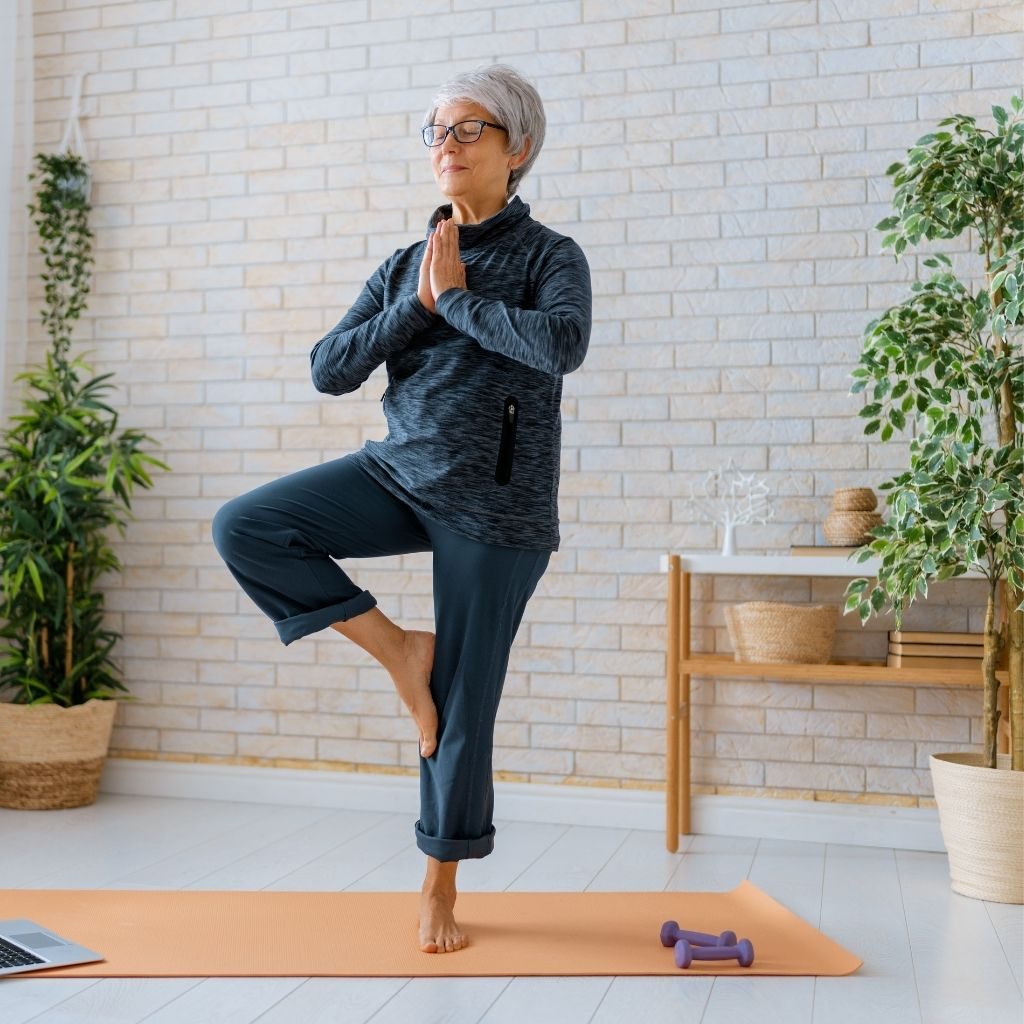Does Yoga Increase IQ? (Answered!)
According to various clinical studies, consistently practicing yoga can help increase your memory and boost your IQ. Even 20 minutes of daily yoga practice can have a significant impact on your brain function. Yoga helps increase your oxygen levels which is crucial for your brain and other body organs.

Yoga was initially developed to help you calm your emotions as it forces you to focus on your breathing with longer exhalations than inhalations.
Non-yogis who begin practicing yoga at least twice a week have experienced a measurable impact on their brain function.
Yoga generally increases the size of your hippocampus, which is crucial in memory processing, thereby making you a better decision-maker.
With at least eight weeks of regular yoga practice, you will also find yourself managing your emotions much better, among other benefits.
5 ways yoga stimulates your brain functions
Most people who practice yoga do it to keep their bodies in ideal shape and condition.
But did you know that yoga can also improve brain health and functioning?
Research has proven that yoga and meditation increase the performance of the parts of the brain controlling attention, mood, and memory.
If you get into yoga, the following are some proven ways your brain health and functioning are going to improve:
1. Improves both short and long-term memory
While practicing yoga, there is increased activity in the brain’s key memory areas, which are the hippocampus and frontal lobe. The stimulation of these two areas results in boosting your short and long-term memories.
Yoga is easily accessible to injured and older people who are unable to work out vigorously. Most people aged 55 years and above tend to suffer from age-related memory loss, and this is where yoga comes in.
Since it provides similar benefits to aerobic exercise without any physical strain, yoga is ideal for improving short and long-term memory.
2. Guiding brainwaves into beneficial frequencies
The beneficial frequencies include alpha, theta, and delta, which lead to cognitive functioning, idea generation, and intellectual capacity. Yoga helps guide your brainwaves into these specific frequencies hence transforming to these states. In return, it leads to an increase in your IQ.
Brainwaves are the electric impulses in your brain that enable the communication of an individual’s behavior, thoughts, and emotions through the brain’s neurons.
The human brain waves generally occur at different frequencies, with some being fast and others slow.

3. Increases the brain’s folds
Yoga introduces structural changes in your brain and increases the number of folds. Research has proven that people who consistently practice meditation have more gyrification in their brain’s cortex.
The surface of your brain is made up of bumps and wrinkles that are not entirely attractive to look at. They are referred to as gyrification or cortical folds.
They play a crucial role in your thinking ability as they contain the brain cells and increase your brain’s surface area hence accommodating more cells.
Your brain’s neuroplasticity allows it to adapt to any changes in the environment, such as regular meditation.
4. Increase gray matter density
Yoga helps increase the volume of gray matter in your hippocampus and frontal lobe. It is responsible for functions like memory, learning new skills, and interpreting senses of smell, hearing, sight, and touch.
40% of brain tissue is gray matter which consists of the brain neurons and cells. Despite being called gray, the tissue is pink in color and turns gray after one dies.
The volume of gray matter in the brain determines an individual’s general intelligence. The thicker the gray matter, the more cells are present, hence better brain performance.
5. Reduces stress and anxiety
While practicing yoga, some parts of your brain tend to slow down and rest, allowing you to de-stress. This functionality takes place in two major areas, that is the frontal lobe and the parietal lobe.
The frontal lobe takes a break during meditation, taking a toll on your stress response. Similarly, yoga slows down your parietal lobe, which handles any information originating from your senses.
This includes sounds, sights, and everything else you observe in your environment.
Yoga also decreases your brain’s amygdala, the message processing center receiving and reacting to emotions, reducing anxiety.

Yogic practices that help improve memory and concentration
There are a variety of yogic techniques that can help you enhance your memory, attention, and focus, as well as your general cognition.
Additionally, practicing various yoga forms can help avoid the onset of age-related degenerative brain diseases such as Alzheimer’s disease.
Tree Stand Pose
The tree stand pose is a posture whose main aim is to help you develop a great sense of physical balance. In return, this balance results in a good balance of the emotions and thoughts in your mind.
When holding your body steadily, your mind calms down, resulting in higher focus and concentration. This pose is practiced by stretching out your hands up as far as you can when standing straight.
You will also need to bring your palms together and fold your left leg. Then bring your foot’s sole to the inner part of your right knee.
Big Toe Pose
This posture provides you with instant relaxation from physical and mental exhaustion. Stretching one’s hamstrings is exceptionally relaxing, primarily due to the comfortable feeling after the stretch.
The big toe pose calms the brain and relieves your anxiety and stress. You achieve this posture by separating your feet 6-inches apart, standing upright, and bending forward.
You should also extend the upper body from your hips and ensure you inhale while at it. When bending forward, try to touch your big toe with your middle and index fingers.
Mountain Pose
It is a basic and modest position that might help you sleep better if you have a restless mind. This position is easy, yet it is equally efficient in focusing and calming your attention on your breathing.
Consequently, the mountain pose can help reduce headaches and insomnia, especially if you struggle to obtain enough sleep by helping you get more profound sleep.
You can achieve this posture by standing with your arms on your side, weariness, and your feet close together. You will also need to ensure your pelvic region is neutral and your abdominal muscles remain engaged.
While in this position, inhale and exhale and produce a gentle sound with your chin parallel to the ground.
Plow Pose
Anxiety, repeated thoughts, and restless emotions are all factors that might disrupt your sleep. Plow pose is excellent for preparing your body and mind for relaxation and meditation.
It boosts blood flow to all regions of your body, including your brain, and relaxes your entire body. To achieve plow pose posture, you need to lie flat on your back with your arms parallel flat on the ground.
Using your abdominal muscles and your hands on your hips, raise your legs over your heads until they touch the floor. Inhale while holding this position for several seconds.
Channel cleaning breath
Given that most of us spend our days inside, a breath of fresh air may do wonders for your brain by providing it with an extra dosage of oxygen.
Breathe softly in and out as your heart rate drops while executing the yoga practice; this will immediately result in a reduction in tension and anxiety.
This simple yoga practice is achieved by sitting in a comfortable cross-legged position while exhaling deeply. You will need to use your thumb to keep one of your nostrils closed and breathe with the other.
Then block both nostrils using your thumbs and open one nostril and breathe in from it. Repeat the same process with the other nostril.
Bee breathing
Most of us spend our days in situations where we are surrounded by people, turmoil, or distractions that make it difficult to concentrate, retain information, or memorize.
This type of pranayama is a great way to improve your memory and focus before or after a long day at work.
The humming sound and vibrations help you relax and quiet your mind, removing tension and weariness and negative emotions like worry, agitation, rage, and impatience.
Bee breathing is simply conducted by sitting cross-legged with your index fingers in your ears and breathing in deeply while making a bee-like humming sound.
Lotus pose
Taking a seat but not slumping back into a chair is the most incredible way to relax after a stressful day. Get into this cross-legged yogic practice to fully appreciate the calming effects of sitting on your mind and body.
Lotus pose, a relaxed posture, aids in the removal of stress and tiredness from the body. Your brain can renew itself to a greater extent when your body relieves itself of stress.
Lotus posture is achieved by sitting cross-legged with the soles of your feet pointed upwards in a seated position. Maintain a mudra stance with your hands by bringing your index and thumb together and extending the rest of your fingers downwards. While at it, inhale and exhale deeply.
Seated forward bend
This yogic technique not only helps give your spine a stretch after sitting in a chair all day, but it also relieves lower back discomfort for desk jockeys or individuals who stay physically inactive for most of the day.
The forward bend action helps to ease tension, relax the mind, and increase blood flow.
Negative emotions such as irritation and rage can also be relieved by stretching your spine. The seated forward bend is a simple practice where you sit on a flat surface while extending your legs in front of you.
Breath in while leaning forward and extend your arms to reach out as far as possible. When stretched out completely, exhale.
Conclusion
The different poses suggested above focus on directing more blood and oxygen to the brain to help in meditation and relaxation.
This, in return, helps improve functions such as interpretation of senses, memory, and learning of new skills.
Regular yoga and meditation gradually increase your IQ by making your mind more efficient and reflective.



